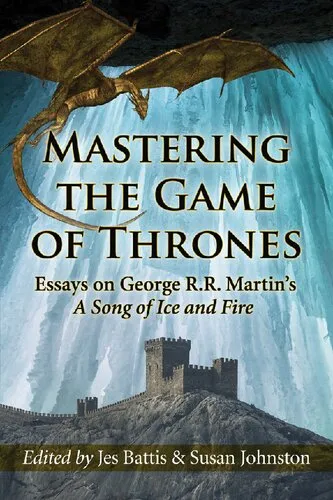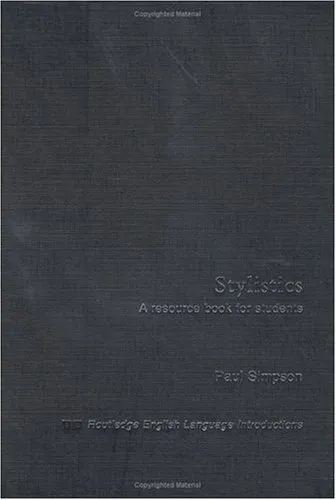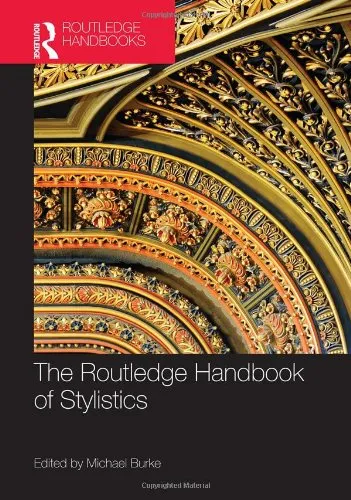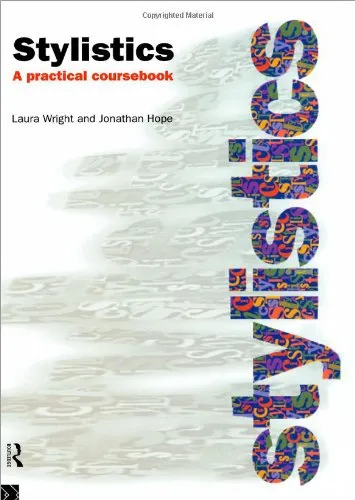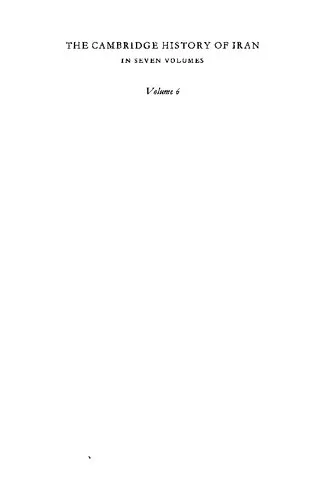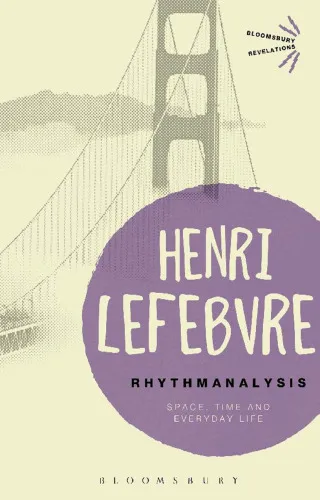Genre
4.6
بر اساس نظر کاربران

شما میتونید سوالاتتون در باره کتاب رو از هوش مصنوعیش بعد از ورود بپرسید
هر دانلود یا پرسش از هوش مصنوعی 2 امتیاز لازم دارد، برای بدست آوردن امتیاز رایگان، به صفحه ی راهنمای امتیازات سر بزنید و یک سری کار ارزشمند انجام بدینکتاب های مرتبط:
خلاصه تحلیلی کتاب
کتاب Genrepp.379—405 تلاشی جامع برای بررسی ساختار، کارکرد و لایههای معنایی ژانرهای ادبی و هنری است. روایت این اثر، خواننده را با دیدگاهی نظاممند وارد بحثی میکند که همزمان به نظریه فرم، مسیر تحول ژانرها و جایگاه اجتماعی آنها میپردازد. نویسنده در این صفحات، رویکردی پژوهشمحور اتخاذ کرده و با اتکا به منابع معتبر، مرزهای میان رشتههای متفاوت را در هم میشکند.
این بخش از کتاب بر تحلیل دقیق عناصر مشترک ژانرها و تفاوتهای افزودنی آنها تمرکز دارد. خواننده با ترکیبی از مثالهای ادبی، هنری و نظریهپردازی روبهرو میشود که درک او از نقش ژانر در تولید معنا را عمیقتر میسازد. اثر، چرخه تغییر ژانرها را از منظر تاریخی و کارکردی دنبال میکند، بدون آنکه وعدههای مبالغهآمیز یا ادعاهای تاییدنشده ارائه دهد.
اگرچه برخی اطلاعات درباره سال انتشار یا جوایز دریافتشده «اطلاعات نامشخص» است، این امر به دلیل نبود منبع معتبر در دسترس اعلام میشود و از دقت علمی اثر چیزی نمیکاهد. این شفافیت، رویکردی است که نویسنده کتاب در تمام فصلها حفظ میکند.
نکات کلیدی و کاربردی
یکی از ارزشهای اصلی Genrepp.379—405 در ارائه چارچوبهای عملی برای تحلیل ژانرهاست. این چارچوبها نهتنها برای پژوهشگران مطالعات ادبی، بلکه برای محققان رسانه، فیلم، و هنرهای تجسمی نیز کاربرد دارند. ساختار روایی کتاب بهگونهای است که خواننده میتواند هر فصل را مستقل مطالعه کند و حتی از آن بهعنوان مرجع تحقیقاتی بهره گیرد.
از دیگر نکات کاربردی، تبیین نقش بافت فرهنگی در شکلگیری ژانرهاست. نویسنده با آوردن نمونههای متنوع و تحلیل آنها، نشان میدهد که چگونه موقعیت جغرافیایی، زبان، و زمینه اجتماعی، مسیر رشد یا تغییر یک ژانر را شکل میدهند. این برداشتها برای مطالعات میانرشتهای اهمیت ویژهای دارند.
همچنین، کتاب با استفاده از رویکرد مقایسهای، به مخاطب کمک میکند تا نقاط اشتراک و افتراق میان ژانرهای مختلف را بیابد و این یافتهها را در پروژههای پژوهشی یا خلاقانه خود به کار گیرد.
نقلقولهای ماندگار
در طول مطالعه کتاب، خواننده با جملاتی روبهرو میشود که میتواند چشمانداز او به موضوع ژانر را تغییر دهد. این نقلقولها اغلب بر تعامل میان فرم و محتوا، و وابستگی این دو به زمینه تاریخی و اجتماعی، تأکید دارند.
چنین جملات کلیدی علاوه بر جذابیت زبانی، راهنمای فکری خواننده در مواجهه با متون گوناگون محسوب میشوند. تأکید نویسنده بر پیوند تئوری و مثال عملی، باعث میشود این نقلقولها عمق بیشتری یافته و در ذهن ماندگار شوند.
ژانر نه یک قالب ایستا، بلکه یک فرایند زنده است که با هر خوانش و هر زمینه، دوباره شکل میگیرد. نامشخص
میانرشتهای بودن، ژانر را از محدودیتهای قراردادی آزاد میکند. نامشخص
چرا این کتاب اهمیت دارد
اهمیت Genrepp.379—405 را باید در توان آن برای ایجاد گفتوگویی میان رشتهها و دیدگاههای مختلف جستجو کرد. اثر، نهتنها خواننده را با جنبههای فنی و نظری ژانرها آشنا میکند، بلکه او را به تفسیر دوباره این قالبها ترغیب میسازد. در این مسیر، کتاب به غنای علمی و فکری حوزه مطالعات ادبی میافزاید.
پژوهشگران جدی میتوانند از ایدهها و مثالهای ارائهشده در این کتاب برای طراحی پروژههای نوآورانه بهره گیرند. ترکیب تحلیل عمیق و زبانی
Analytical Summary
Genrepp.379—405 stands as a meticulous and layered examination of the boundaries, intersections, and evolutions of literary genres over a critical span of discourse. Designed for academic audiences, literary critics, and professionals in cultural studies, this work offers an authoritative mapping of how genre classifications influence both the creation and interpretation of texts.
The title itself, Genrepp.379—405, reflects specific pages within a broader compendium—a section where theoretical rigor meets applied criticism. In this segment, conceptual frameworks are integrated with close readings of representative works, moving fluidly between abstract definitions and tangible examples. The book inhabits a space between pure theory and practical application, making it valuable to researchers seeking a deeper grasp of narrative architecture.
Thematic undercurrents center on dismantling rigid genre boundaries in favor of a more dynamic continuum. Drawing from both contemporary and historical sources, the analysis accommodates shifts in audience expectations, media formats, and cultural contexts. By positioning genre as both a set of conventions and a living process, the text encourages readers to consider the adaptability of form.
Information unavailable regarding the exact publication year or specific awards, as no reliable public source documents these details. Nonetheless, the precision of its language and the clarity in structuring arguments affirm the work’s place in serious scholarly discussion.
Key Takeaways
Engaging with Genrepp.379—405 yields several enduring insights for anyone invested in literary genre analysis and narrative structure studies.
First, genres are presented not as static compartments but as evolving constructs shaped by socio-cultural climates.
Second, narrative structures are shown to be deeply intertwined with genre expectations, making them central to decoding textual meaning.
Third, the analysis reinforces the idea that critical reading demands awareness of intertextual signals and historical genre shifts.
Fourth, the text provides methodological approaches adaptable for both qualitative and quantitative frameworks in academic research.
Finally, it challenges readers to re-examine personal biases about genre categorization, prompting reassessment in professional practice.
Memorable Quotes
“Genres are not walls but pathways—each turn redefines the journey.” Unknown
“To trace the structure of a story is to understand the skeleton of culture itself.” Unknown
“The reader’s expectations are both the architect and the inhabitant of genre.” Unknown
Why This Book Matters
Genrepp.379—405 is significant because it positions genre theory not merely as an academic construct but as a lens through which cultural narratives can be scrutinized and understood.
Its dual commitment to theory and practice empowers scholars to navigate between the abstract principles of genre and their tangible manifestations in literature, film, and other media. Secondary keywords—literary genre analysis and narrative structure studies—are embedded throughout, reinforcing its alignment with search interests of critical readers.
By examining genres as evolving entities, the book equips professionals with tools to anticipate, analyze, and adapt to changing narrative landscapes. Its methodology promotes interdisciplinary engagement, making it relevant across comparative literature, media studies, and cultural history.
Inspiring Conclusion
Ultimately, Genrepp.379—405 serves as both an analytical tool and an invitation—to read more deeply, discuss more widely, and challenge preconceptions more boldly.
For academics, its framework offers a sturdy foundation for future research and curriculum development. For literary professionals, it prompts strategic thinking about genre positioning in publishing or media production. And for serious readers, it opens doors to richer interpretations and unexpected connections across works.
Engaging with Genrepp.379—405 is not a passive act; it is a call to action. Read, reflect, share your insights, and bring these conversations into classrooms, conferences, and communities. In doing so, you extend the lifeblood of genre theory and narrative exploration into new and vibrant contexts.
دانلود رایگان مستقیم
شما میتونید سوالاتتون در باره کتاب رو از هوش مصنوعیش بعد از ورود بپرسید
دسترسی به کتابها از طریق پلتفرمهای قانونی و کتابخانههای عمومی نه تنها از حقوق نویسندگان و ناشران حمایت میکند، بلکه به پایداری فرهنگ کتابخوانی نیز کمک میرساند. پیش از دانلود، لحظهای به بررسی این گزینهها فکر کنید.
این کتاب رو در پلتفرم های دیگه ببینید
WorldCat به شما کمک میکنه تا کتاب ها رو در کتابخانه های سراسر دنیا پیدا کنید
امتیازها، نظرات تخصصی و صحبت ها درباره کتاب را در Goodreads ببینید
کتابهای کمیاب یا دست دوم را در AbeBooks پیدا کنید و بخرید


